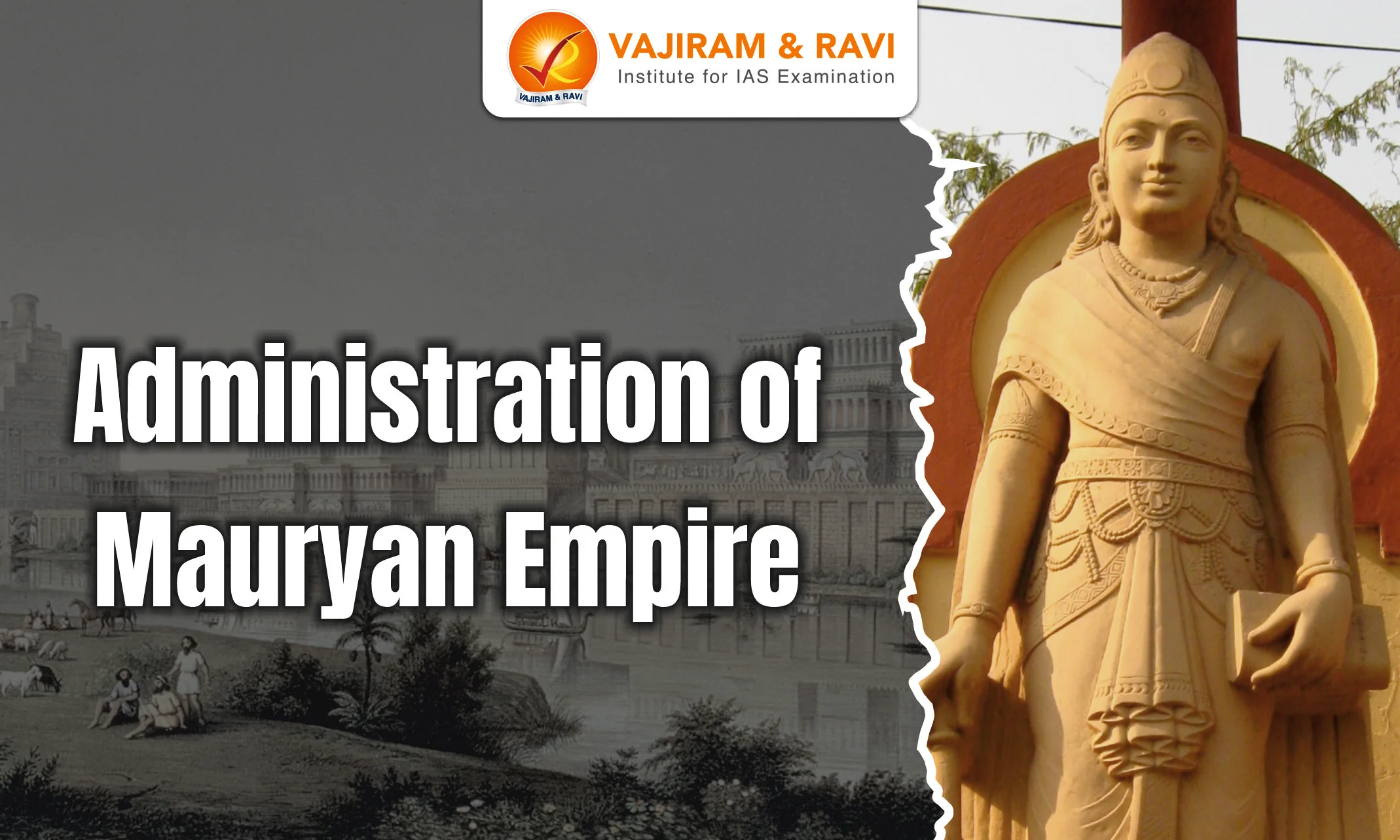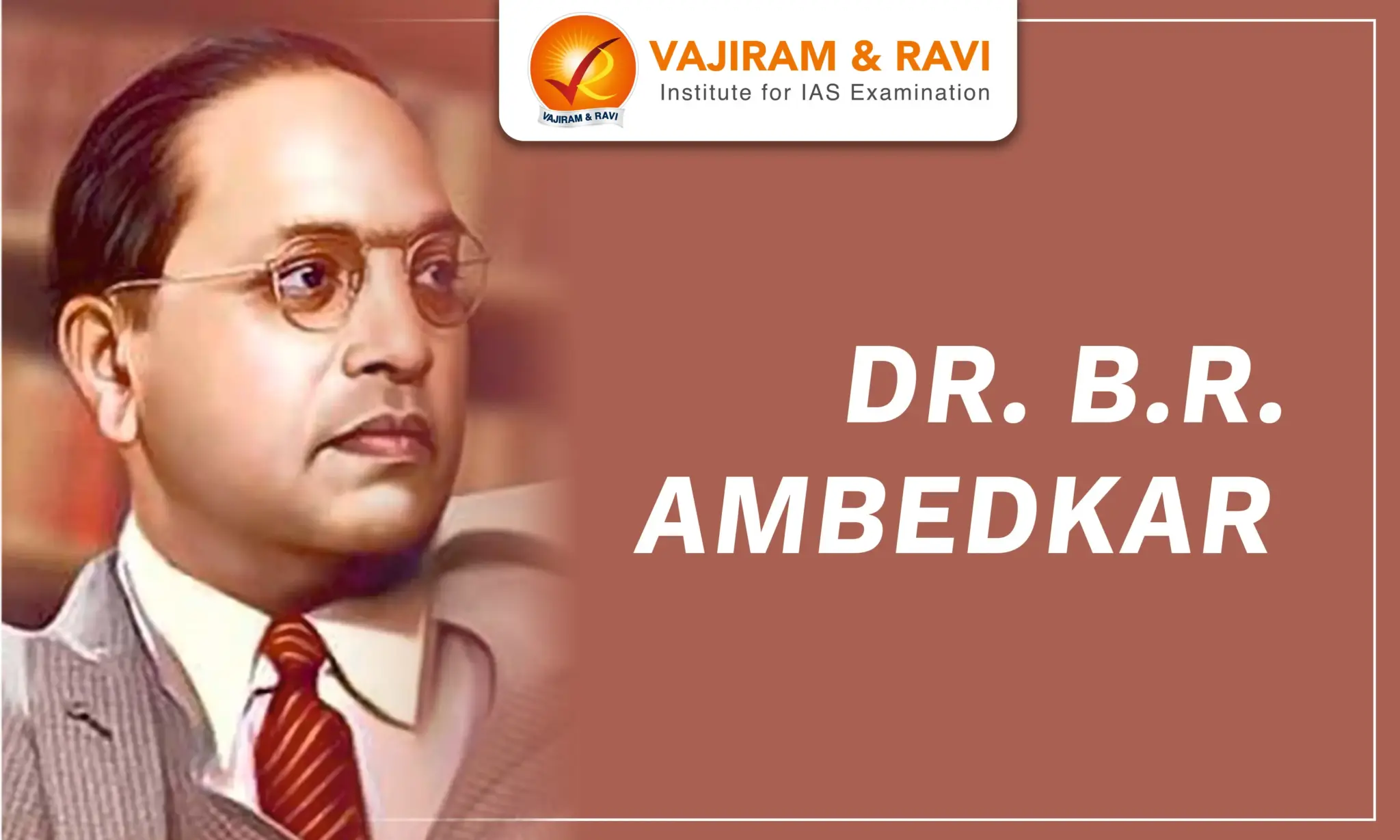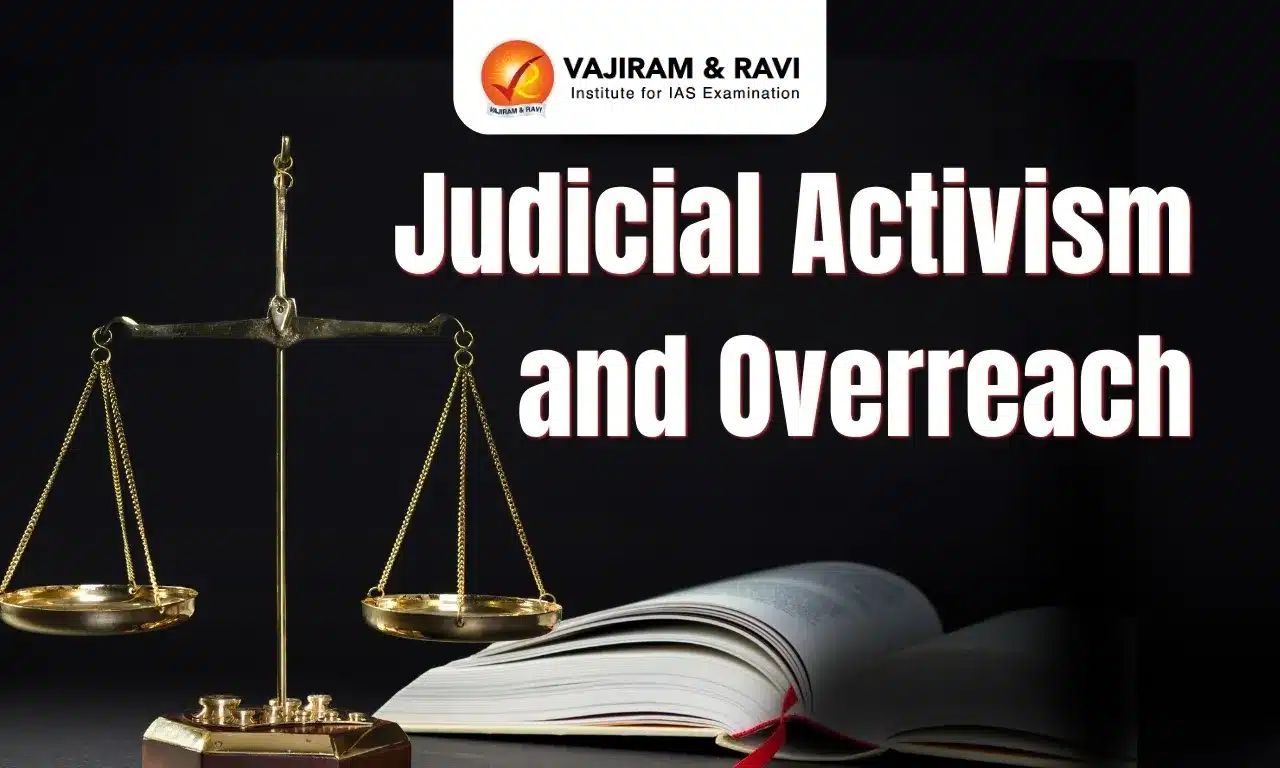Mauryan Administrative System
Indian history entered a new era with the beginning of the Mauryan Empire, as India attained political unity and administrative uniformity for the first time.- Mauryans developed an organized and elaborate system of administration.
- Decentralization was prevalent, as the village units played a significant role as the base of grassroots administration.
- The empire was divided into provinces, provinces into districts, and districts into rural and urban centers for efficient administration.
- Kautilya: Saptanga theory of State: “Saptang” indicates seven limbs, constituents or elements. Seven Angas, Prakritis, or elements were enumerated and elucidated by Kautilya for describing “the nature of the State” in its totality. These are:
- Swami (The Sovereign King): The Swami is the chief executive head of the state and is, thus, “the consummation of all other elements”.
- Amatya (The Minister): Kautilya describes an elaborate system of recruitment of the Amatyas and other officials who were to be morally and ethically pure, honest in financial matters and of good character.
- Janapada (The People and The Territory): This unique element of Saptanga is the symbol of the State, which stands for a “territorial society”. Kautilya’s Janapada includes not only territory but also population.
- Durga (Fortification): Kautilya regarded fortification as essential for the defence and protection of the state. He wanted the state to fortify the territories from all sides.
- Kosha (The Treasury): Kautilya wanted a prosperous treasury; he specifically directed the king to earn the wealth of the nation only by legitimate and righteous means and in no way by unfair and immoral means
- Danda (The Army or The Force): He accepted a strong and hereditary Kshatriya army as the most important requisite of the state.
- Mitra (The Allies): Kautilya considered the Mitra or the Ally a vital factor. Kautilya recognises two kinds of allies, namely Sahaja and Kritrima.
Central Administration
The King was the supreme and sovereign authority of the Mauryan administration.- Powers of the King: He had his supreme executive, legislative, and judicial powers vested.
- He appointed ministers and other officers of the royal administration.
- He was the supreme commander of the army and head of the entire military.
- The Mauryan Empire (before Ashoka) was essentially a Hindu State.
- According to the Hindu concept, the supreme sovereign of the State was ‘Dharma’ or law, and the King was to be its guardian.
- He was aided and advised by a ‘Mantri Parishad’ (Council of Ministers), and he was to be guided by it in day-to-day administration.
- Influence of Brahmins: The Brahmins significantly influenced the King, who could not disobey them.
- Decentralisation: Powers of the Mauryan government were decentralised; the provincial governor and ministers had the right to be consulted by the King, especially in all provincial matters.
- Bureaucracy: A well-organized hierarchy of bureaucrats looked after the executive, judicial, and revenue offices.
- The entire administration system was organised into departments, each headed by a Superintendent known as ‘Adhyaksha.’ Clerks, accountants, and spies assisted the Adhyaksha.
- Besides, there were other officers like the Army Minister, Chief Priest, and Governor of Forts.
Provincial Administration
- The entire Empire was divided into two parts:
- The kingdom that was under the direct rule of the King, and
- The vassal states
- The territory directly ruled by the King was divided into several provinces called ‘Janapadas.’
- Ashoka had five provinces with capitals: Taxila, Ujjain, Tosali, Suvarnagiri, and Pataliputra.
- Each province was subdivided into a number of districts, and each district was again subdivided into a number of units.
- However, there were vassal states in addition to these centrally ruled Mauryan territories. They enjoyed a great deal of autonomy.
- The provincial administration worked on similar lines to the central administration.
- The Mauryan Emperor directly ruled the central and eastern parts of the Empire.
- Role of Governors: The other areas were ruled by the provincial Governors. The provincial Governors were responsible for the day-to-day conduct of the administration of provinces.
- There were also the district officers, reporters, and clerks, who helped in the smooth running of provincial administration.
Local Administration
- The district administration was in charge of ‘Rajukas’, whose position and functions are similar to today’s district collectors.
- He was assisted by ‘Yuktas’ or subordinate officials.
- In the urban area, there was a Municipal Board. There were six committees with five Board members in each to manage the administration of cities.
| Committee on | Function |
| Industrial Arts | It looked after industry and crafts. It inspected such centers and looked after fixing wages etc. |
| Foreigners | It looked after the foreigners. Its functions included arranging their food, stay, comfort, and security. |
| Registration of Births and Deaths | Registration of births and deaths |
| Trade and Commerce | It looked after trade and commerce. It inspected weights and measures, markets etc. |
| Supervision of Manufactures | Inspected manufactured goods, made provisions for their sale and steps taken to distinguish between new and second-hand goods |
| Collection of Excise and Customs duty | It collected taxes on the goods sold, the rate being 1/10th. |
- Village administration was in the hands of ‘Gramani’, and his superior was called ‘Gopa,’ who was in charge of ten to fifteen villages.
- Census was a regular activity, and the village officials were to number the people along with other details such as their castes and occupations.
- Conducted by municipal officials, mainly to track the movements of both foreign and indigenous populations.
Judicial Administration
The King was the head of the Judiciary and the highest court of appeal. But due to the large empire, judges were appointed to resolve disputes.- The Supreme Court was located in the capital, and the Chief Justice was called ‘Dharmathikarin.’
- The nature of the punishment depended on the nature, gravity, circumstances, and the varna of the offender and the plaintiff.
- At the district level: Subordinate courts under ‘Amatyas.’
- In Towns: cases were settled by ‘Nagara Vyavaharika Mahamantra’.
- At the Village level: cases were settled by the ‘Gramavradha’.
Military Administration
- The Mauryan army was well organized and was under the control of a ‘Senapati.’
- There was a Board of 30 members to look into matters pertaining to war.
- These members were placed in six committees, and these committees were responsible for managing the wings of the military, i.e., navy, transport and supply, infantry, cavalry, war chariots, and war elephants.
- Each of the above wings was controlled by ‘Adhyaksha’ or Superintendents.
- Board of Infantry: Headed by Padadhyaksha
- Board of Cavalry: Headed by Asvadhyaksha
- Board of War Chariots: Headed by Rathadhyaksha
- Board of War Elephants: Headed by Hastyadhyaksha.
Last updated on November, 2025
→ Check out the latest UPSC Syllabus 2026 here.
→ Join Vajiram & Ravi’s Interview Guidance Programme for expert help to crack your final UPSC stage.
→ UPSC Mains Result 2025 is now out.
→ UPSC Notification 2026 is scheduled to be released on January 14, 2026.
→ UPSC Calendar 2026 is released on 15th May, 2025.
→ The UPSC Vacancy 2025 were released 1129, out of which 979 were for UPSC CSE and remaining 150 are for UPSC IFoS.
→ UPSC Prelims 2026 will be conducted on 24th May, 2026 & UPSC Mains 2026 will be conducted on 21st August 2026.
→ The UPSC Selection Process is of 3 stages-Prelims, Mains and Interview.
→ UPSC Result 2024 is released with latest UPSC Marksheet 2024. Check Now!
→ UPSC Prelims Result 2025 is out now for the CSE held on 25 May 2025.
→ UPSC Toppers List 2024 is released now. Shakti Dubey is UPSC AIR 1 2024 Topper.
→ UPSC Prelims Question Paper 2025 and Unofficial Prelims Answer Key 2025 are available now.
→ UPSC Mains Question Paper 2025 is out for Essay, GS 1, 2, 3 & GS 4.
→ UPSC Mains Indian Language Question Paper 2025 is now out.
→ UPSC Mains Optional Question Paper 2025 is now out.
→ Also check Best IAS Coaching in Delhi

















